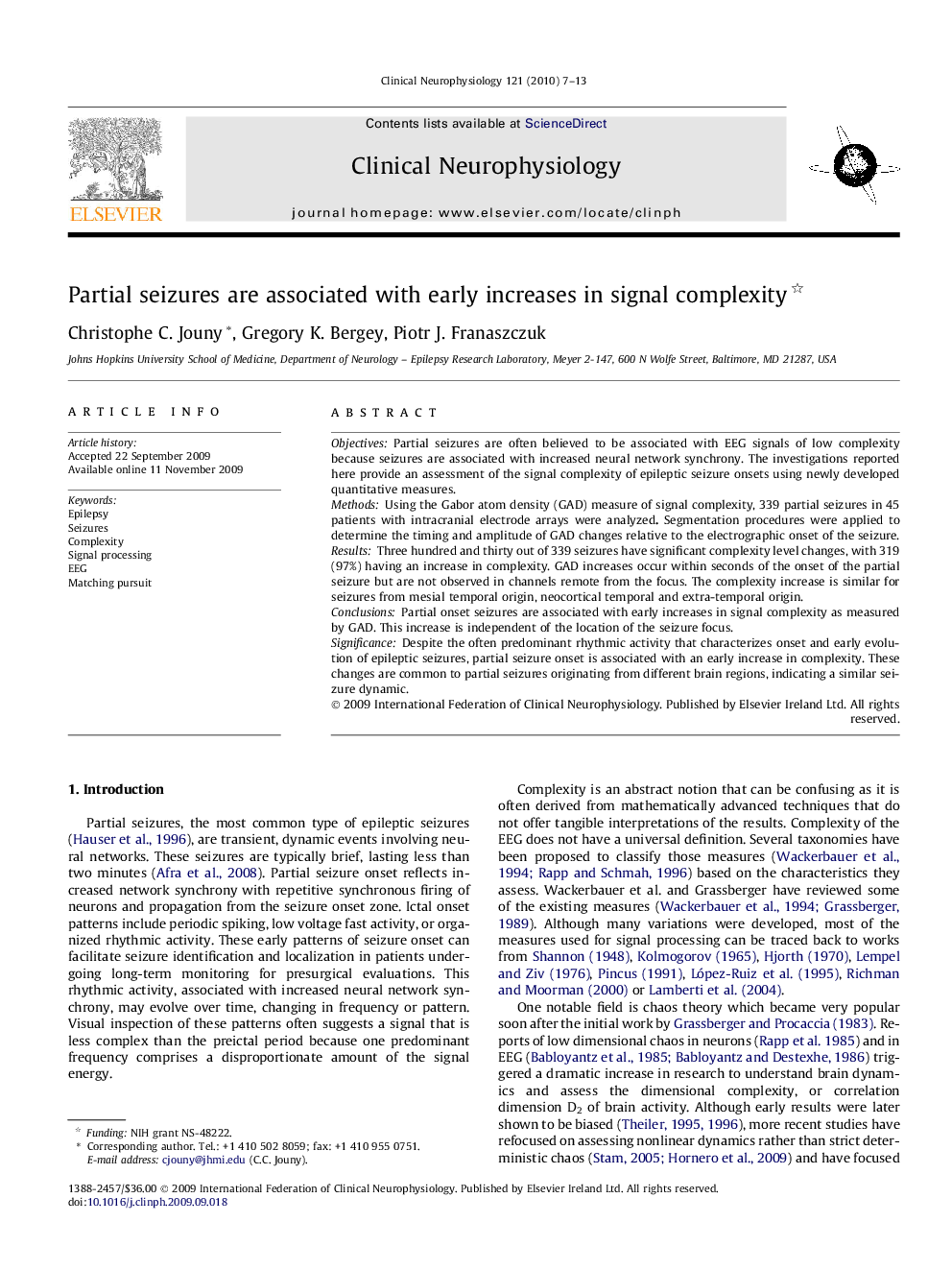| Article ID | Journal | Published Year | Pages | File Type |
|---|---|---|---|---|
| 3045344 | Clinical Neurophysiology | 2010 | 7 Pages |
ObjectivesPartial seizures are often believed to be associated with EEG signals of low complexity because seizures are associated with increased neural network synchrony. The investigations reported here provide an assessment of the signal complexity of epileptic seizure onsets using newly developed quantitative measures.MethodsUsing the Gabor atom density (GAD) measure of signal complexity, 339 partial seizures in 45 patients with intracranial electrode arrays were analyzed. Segmentation procedures were applied to determine the timing and amplitude of GAD changes relative to the electrographic onset of the seizure.ResultsThree hundred and thirty out of 339 seizures have significant complexity level changes, with 319 (97%) having an increase in complexity. GAD increases occur within seconds of the onset of the partial seizure but are not observed in channels remote from the focus. The complexity increase is similar for seizures from mesial temporal origin, neocortical temporal and extra-temporal origin.ConclusionsPartial onset seizures are associated with early increases in signal complexity as measured by GAD. This increase is independent of the location of the seizure focus.SignificanceDespite the often predominant rhythmic activity that characterizes onset and early evolution of epileptic seizures, partial seizure onset is associated with an early increase in complexity. These changes are common to partial seizures originating from different brain regions, indicating a similar seizure dynamic.
